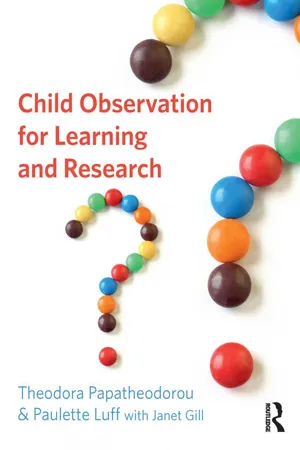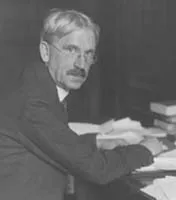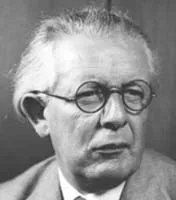
eBook - ePub
Child Observation for Learning and Research
This is a test
- 224 pages
- English
- ePUB (mobile friendly)
- Available on iOS & Android
eBook - ePub
Child Observation for Learning and Research
Book details
Book preview
Table of contents
Citations
About This Book
Child Observation for Learning and Research is an exciting new text, providing a thorough grounding in the methodology, practice and interpretation of observing children.
The authors draw on their experience and expertise in childcare, education, social work and research to introduce the fundamental principles and process of observation, preparing you for your first observation and building knowledge and confidence through a wide range of scenarios and activities.
The book takes the unique approach of demonstrating how acquiring observational skills can serve as a key learning tool, not only helping you to understand children, but also to recognise, analyse and question theory, helping you make sense of your own learning.
Frequently asked questions
At the moment all of our mobile-responsive ePub books are available to download via the app. Most of our PDFs are also available to download and we're working on making the final remaining ones downloadable now. Learn more here.
Both plans give you full access to the library and all of Perlego’s features. The only differences are the price and subscription period: With the annual plan you’ll save around 30% compared to 12 months on the monthly plan.
We are an online textbook subscription service, where you can get access to an entire online library for less than the price of a single book per month. With over 1 million books across 1000+ topics, we’ve got you covered! Learn more here.
Look out for the read-aloud symbol on your next book to see if you can listen to it. The read-aloud tool reads text aloud for you, highlighting the text as it is being read. You can pause it, speed it up and slow it down. Learn more here.
Yes, you can access Child Observation for Learning and Research by Theodora Papatheodorou,Paulette Luff,Janet Gill in PDF and/or ePUB format, as well as other popular books in Education & Education General. We have over one million books available in our catalogue for you to explore.
Information
Part IThinking about and planning for child observation |  |
Chapter 1Observation and learning |  |
In this chapter we explore the role of observation in the learning process, both informal and formal, and discuss social constructivism as our theoretical framework for learning and knowledge construction. For this, we briefly explore what constitutes learning and some debates about how we learn, and consider various theories of learning before discussing social cultural constructivism as our model of understanding observation as a learning tool.
Vignette 1.1
In the garden, in early July, Nigel – the gardener – and I are having lunch. A wasp came and took a small piece of ham. It flew away and came back repeatedly for more helpings.
– Just watch it, said Nigel. It cuts small, perfectly rounded, pieces of ham the size of its head … This time of the year wasps go for meat.
– How do you know this? I asked surprised.
– Well, when I was a child, I used to observe them coming to our butcher’s window, this time of the year … By August wasps go for the ripe, sweet fruits. I used to think as a child that the wasps ate meat because there were not any ripe fruits for them to eat. I now know that they take the meat to feed the grubs that produce sweet excretions which then are eaten by the wasps.
Vignette 1.2
My son, four years old, is sitting at the dining table with a piece of paper in front of him and his crayons. After some time and with much attention to detail, he drew a fish. He picked up his drawing and looked at it. He seemed satisfied with his work. He then put it down on the table. He looked at his crayons and chose a dark blue colour. He started scribbling on top of his picture, until the drawing of the fish was not visible. He is not happy with his picture, I thought. He always does this when he is not satisfied with his work. Such a perfectionist! But then I asked:
– So, what have you drawn there?
– Oh, it’s a fish, but it’s in the sea. So, you cannot see it now!
Introduction
Observation is what we constantly do in our everyday life; we observe physical and social phenomena as well as other people and, on the basis of these observations, we attempt to understand and make sense of the surrounding world.
We identify patterns, make associations between them, and form certain ideas of the things happening around us (as in Vignette 1.1) or we attribute thoughts and intentions and characteristics to observed individuals (as in Vignette 1.2). Although casual and informal, hastily conducted, and often merging evidence and opinion, our everyday observations gradually form our folk theories. These theories provide us with a system of connected assumptions and beliefs which form our source of knowledge about the world that we use to organise and make sense of new experiences (Bruner 1990).
Everyday observations, however, may also lead to habitual thinking, false assumptions and presumptions, and stereotypical thinking, if we fail to make meaningful connections (Dewey 1991). For example, was Nigel correct with his childhood claim that wasps went for meat? What was the underlying assumption of his claim? Was his assumption adequately substantiated? Similarly, have the mother’s prior observations led her to habitual and stereotypical thinking about her son (he – her son – always does this; he is such a perfectionist)?
Dewey (1991) claimed that habitual observations may lead to ‘lazy’ thinking which makes it difficult for people to cope with incongruent information and difference. He argued that to make meaningful connections we need reflective and analytic modes of thinking that set us free from past routine and customary interpretations of our experience. He maintained that people need to reach a certain level of abstraction, that is, to move away from concrete experience and habitual responses, in order to think differently, learn new things and be liberated to follow alternative or new ideas.

Theorist box 1.1
John Dewey (1859–1952) was a prominent American philosopher and educational theorist whose work shaped much of the educational thinking in the twentieth century. He paid particular attention to the role of experience and reflection in human learning. He opposed the prevalent (at his time) knowledge transmission model of learning and, as a response, he proposed experiential learning as a framework that explained the development of knowledge as an adaptive human response to environmental conditions. Some of his influential books in education include: How We Think (1991); Experience and Education (1997a); Democracy and Education (1997b).
The significance of Dewey’s comments cannot be underestimated, especially when we use observation as a purposeful and intentional learning tool. Indeed, for a long time observation has been used as a tool to offer concrete experiences to learn about something (e.g. child development; teaching and learning). Through the systematic, methodical and rigorous examination of the observations conducted we also begin to understand the learning process, that is, how to learn. To understand the learning process through observation, we will define the term learning in this chapter and briefly discuss the debates about how we learn. We will then explore the role of observation in learning through various theories of learning. We will conclude by discussing observation within socio-cultural constructivism and its role in the learning of students pursuing childhood studies.
What is learning?
It is difficult to define learning and, indeed, most researchers and theorists refer to the function and impact of learning rather than defining it. For example, Woolfolk et al. (2008:24) understand learning as the process that causes ‘permanent change in knowledge and behaviour’ through experience, while Lave and Wenger (1991:53) state that learning helps individuals to ‘become [sic] a different person’ through the possibilities offered within her/his social system or community. In general, these ideas about learning highlight the transformational nature of learning and emphasise the role of experience located within the learner’s physical and social environment.
There are continuing debates about how learning is understood in formal education. Hargreaves (2004:27) states that, in education, learning is often described as the acquisition of knowledge, skill and understanding, and he also recognises that learning how to learn is equally important. The first view of learning implies that there is a body of knowledge and theories (e.g. child development, sociological theories etc.) considered to have general currency about our understanding of the world and, thus, they deserve to be transmitted from generation to generation. The latter view sees learning as a process where we use past and current knowledge and our own experience to change our ways of thinking and our behaviour. The first view of learning reflects the knowledge transmission model, while the latter the knowledge construction model of learning (Hargreaves 2004; McCormick and Paechter 1999; Dewey 1991).
In general, the knowledge transmission model assumes that learners change in thought and behaviour through their familiarisation and acquaintance with existing theories and literature; knowledge comes from outside. This view is reflected in early radical behaviourism and is better illustrated in Watson’s (1930:104) claim, below:
Give me a dozen healthy infants, well-formed, and my own specified world to bring them up in and I’ll guarantee to take any one at random and train him to become any type of specialist I might select – doctor, lawyer, artist, merchant-chief and, yes, even beggar-man and thief, regardless of his talents, penchants, tendencies, abilities, vocations, and race of his ancestors.
Learning through observation
The determinism of external factors and the assumed passivity of learners however were soon challenged from within behaviourism (Bandura 1977; 1986; Skinner 1953; 1976). Bandura, in particular, with his social learning theory, maintained that as children grow their development is increasingly based on observation and imitation. He argued that children learn to regulate their own behaviours and actions by watching others around them and imitating their actions (Bandura 1977). He emphasised the role of children’s cognitive capacity in discriminating the consequences of observed events and behaviours (Bandura 1986). His argument was that learning is not happening in a vacuum; instead, it takes place within a social context with learners exercising their cognitive abilities.
The role of cognition in children’s learning has been central to early theories of constructivism. Piaget, for example, explained learning in terms of the child’s capacity to construct knowledge through a gradual and evolving cognitive process throughout childhood. He saw children as emergent scientists, who, given the appropriate experiences, were capable to discover the principles that govern phenomena (Kail 2004; Vasta et al. 1999). Piaget’s (2002) interest and focus was on understanding children’s cognitive and mental processes in constructing their ideas, as they experimented with the resources available. His ideas attracted the interest of educationalists who introduced the notion of learning by doing through the availability of appropriate resources and gradually shifted attention from learning that (knowledge transmission) to learning how (knowledge construction) (Hargreaves 2004).

Theorist box 1.2
Jean Piaget (1896–1980) is one of the most well-known and quoted developmental psychologists, whose work and ideas much influenced the field of education during the twentieth century. Piaget’s initial studies were in biology and philosophy, which influenced his work in terms of the methodologies (observation) and the underlying concepts (e.g. adaptation, accommodation and assimilation) of his child development theory. Although...
Table of contents
- Cover Page
- Half Title Page
- Title Page
- Copyright Page
- Dedication
- Contents
- List of figures
- List of tables
- List of theorist boxes
- List of theory and literature boxes
- List of appendices
- Preface
- Acknowledgements
- Part I Thinking about and planning for child observation
- Part II Conducting and interpreting child observation
- References
- Appendix 1 Sample participant information letter and consent form
- Appendix 2 Segmented observation record and assigned categories
- Appendix 3 A revised analytical framework
- Appendix 4 Sample of a front sheet for assessed work
- Index